“Just call me Daisy,” she said. “You know, like in the movie Driving Miss Daisy.” Her name is actually Desislava Natzkova but, as she later explained to me, her Bulgarian name is difficult for most Americans to remember or wrap their tongues around. “So I just make it easy for them.”
I met Desi in 2015, during my Viking River Grand European Tour, a 15-day cruise that traversed four countries on its route from Amsterdam to Budapest. She was Viking’s Concierge on that voyage, and as the person responsible for booking extra tours, I had the opportunity to work with her directly. When Desi learned I had visited (and fell in love with) her home town of Sofia, Bulgaria, what started as a pleasant customer service relationship blossomed into a long-term friendship. We stayed in touch over the next few years, even after she left Viking. I kept saying I wanted to discover more of Bulgaria, beyond my previous visits to Sofia, Rila Monastery and the ancient Black Sea port of Sozopol. She kept encouraging me to return, promising to show me many more things to see in Bulgaria.
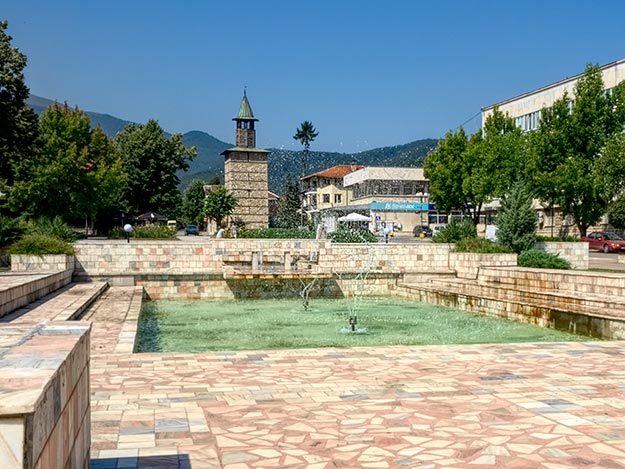
I finally made it back this past summer. True to her word, Desi took me on an amazing cultural tour of Bulgaria. We began in the northwestern corner of the country, in the town of Vratsa, an ancient city founded by the Thracian civilization. Other than the fact that Thracians were a collective of Indo-European tribes that inhabited large areas in eastern and southeastern Europe, relatively little is known about them. Their Greek and Roman neighbors in antiquity considered them to be barbarians, however caches of gold and silver treasures from ancient Thrace unearthed by archeologists seem to dispute this assessment.
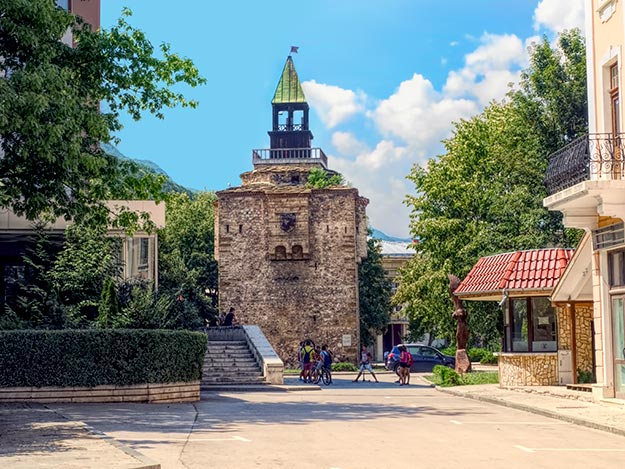
The most spectacular of these items are on display at the Museum of History in Vrasta, which is best known for the Rogozen Treasure. The cache of 165 silver and gold gilt vessels was found in 1985 by a farmer who was plowing his garden in the nearby town of Rogozen. To date it is the biggest Thracian treasure ever discovered on the territory of Bulgaria. I was astounded by the exquisite workmanship on these 2,500-year old artifacts, which depict scenes from Thracian and Greek mythology and provide strong evidence of an advanced civilization.
Vrasta’s location in the foothills of the Balkan Mountains also makes makes it a popular destination for outdoor activities. Locals who come to hike, bike, hunt, fish, ski, paraglide, climb mountains, and explore the abundant local caves. We opted for a gentle hike on an improved trail that took us through the Leva River valley. Sensational jagged Rhyolite peaks bracketed the valley, evidence of the fierce volcanic activity that created this wild landscape. Hungry from our hike and the fresh air, we headed for Loznitsa Restaurant, which specializes in traditional Bulgarian food. Plate after plate of local specialties were piled on our rustic wooden table: chopped salad, roasted hot peppers, fresh-baked bread, and fresh sliced tomatoes garnished with homemade goat cheese. Best of all was the specialty of the house, hand-gathered fire-roasted mushrooms.
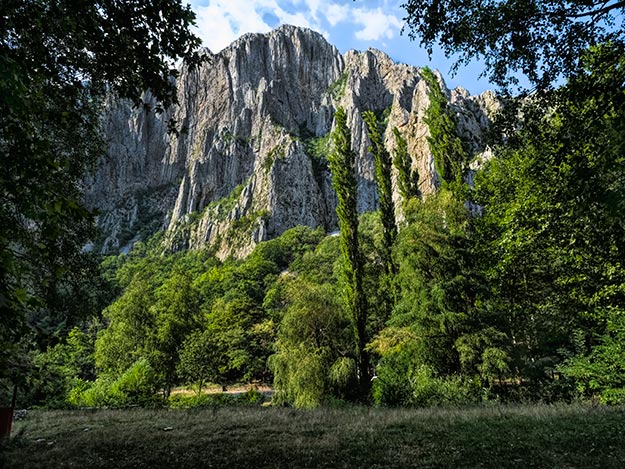
Vrasta’s location in the foothills of the Balkan Mountains also makes makes it a popular destination for outdoor activities. Locals who come to hike, bike, hunt, fish, ski, paraglide, climb mountains, and explore the abundant local caves. We opted for a gentle hike on an improved trail that took us through the Leva River valley. Sensational jagged Rhyolite peaks bracketed the valley, evidence of the fierce volcanic activity that created this wild landscape. Hungry from our hike and the fresh air, we headed for Loznitsa Restaurant, which specializes in traditional Bulgarian food. Plate after plate of local specialties were piled on our rustic wooden table: chopped salad, roasted hot peppers, fresh-baked bread, and fresh sliced tomatoes garnished with homemade goat cheese. Best of all was the specialty of the house, hand-gathered mushrooms roasted under an open fire. (Have I made you hungry yet? If your mouth is salivating and you want to know more, check out this comprehensive guide to Bulgarian Food on the NTripping Blog).
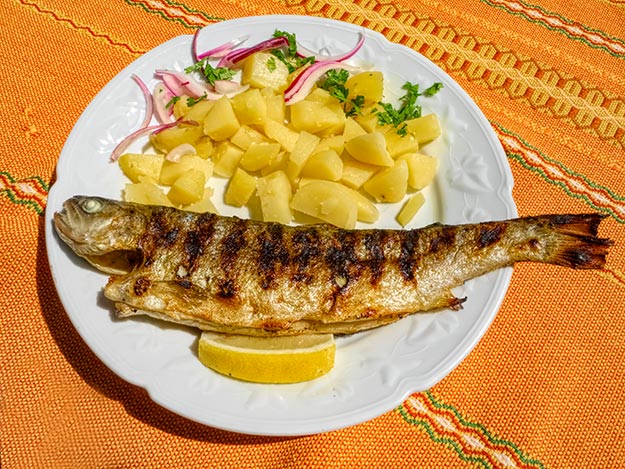
I waddled back to the car, stuffed but happy and ready to tumble into bed but Desi wasn’t done with me yet. A few minutes later we pulled up to the main square in Beli Izvor, a tiny enclave with fewer than 700 permanent residents, where the Beli Noshti (White Night) Festival was underway. Held each year on the three brightest nights of the summer, the festival draws people from all over the region. Something smelled delicious as I stepped out of the car. “That’s the meatballs. You find them at every Bulgarian festival.” Desi explained. She nodded toward the musicians who were warming up and asked me a trick question. “Where do you think bagpipes originated?” Of course, I answered Scotland.

Desi led me to the group of musicians and introduced me to Nikolai (Nikki). His instrument, known as a Jura, looked exactly like a tiny set of Scottish bagpipes. Nikki explained that the Jura, as well as similar but larger bagpipes known as a Gajda, were being used 2,500 years ago, in Thracian times. Both look similar to Scottish bagpipes but have a lower pitch. Nikki excused himself and joined the other members of the band when the first troupe of folkloric dancers took the stage. For the next couple of hours I was mesmerized by their dances, each of which told a story about everyday life in Bulgarian villages during the olden days. More and more people gathered on the square as darkness fell. Children twirled and octogenarians sang along to words they had learned as children.
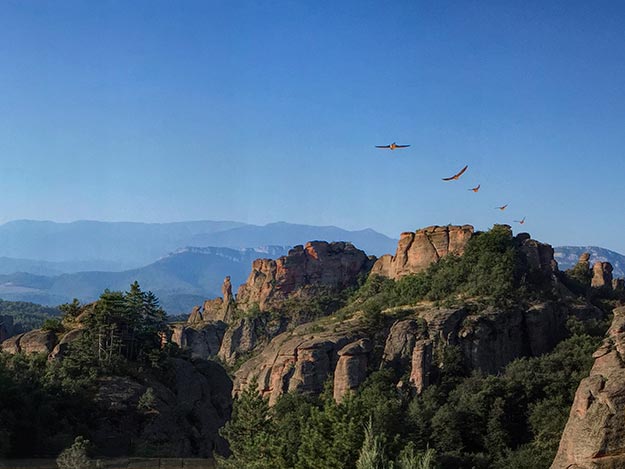
Finally overcome with exhaustion, we retired to our hotel in the city of Belogradchik. Desi showed me my suite and pointed to the drapes. “You’re in for a big surprise tomorrow,” she promised. The next morning I threw back the curtains and gasped. Tortured cliffs and pinnacles glowed ochre and red under the rising sun. Five enormous hawks rode updrafts, forming a perfect chorus line above the geologic formations. These were the Rocks of Belogradchik, formed over the past 230 million years by the forces of wind and water erosion.
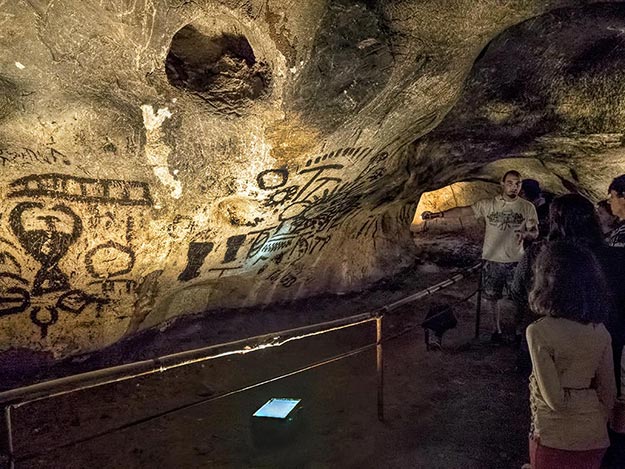
To see them up close, however, I had to wait. First Desi wanted to show me the nearby Magura Cave. The 15-million year old cave complex also features unique formations. Most spectacular among them are the 65-foot tall Giant Column and the Fallen Pine, which resembles a 36-foot pine cone lying on its side. More impressive than the stalagtites and stalagmites are the prehistoric paintings found in the cave. The drawings represent spiritual rituals, childbirth, fertility dances, hunting parties, and astrological events.
One of the paintings is believed to be an ancient solar calendar. A clear representation of a sun with protruding rays is surrounded by rectangles that resembled a strip of 35mm film. Archeologists believe this was the way early man kept track of the seasons in order to know when to plant and when to harvest. Most astoundingly, at Magura visitors can stand inches from the artwork. Similar sites have been closed to the public entirely. At Lascaux Complex in France, for example, an exact copy of the cave was created for the public and the original was resealed to protect the authentic drawings from damage.
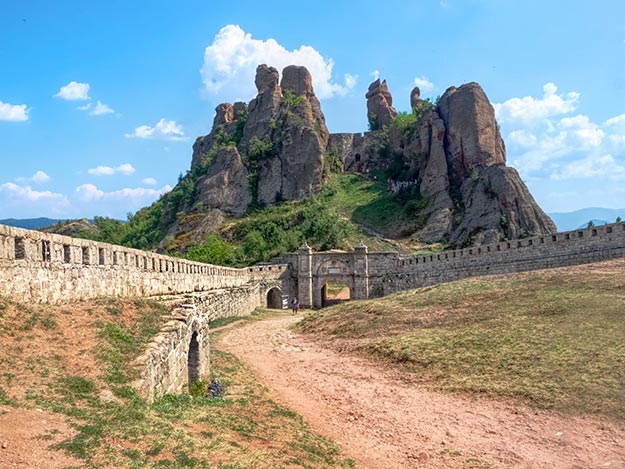
After the chilly 54 degrees inside the cave, I was relieved to step back out into sunshine and brilliant blue skies. Back in town, we headed for the Belogradchik Fortress. Constructed during the time when Bulgaria was part of the Roman Empire, the fortress incorporated the Belogradchik Rocks into its design. Rising 230 feet high, the rocks provided an impenetrable access on two sides. Blocks of sandstone were placed on the other two sides, creating walls more than six feet thick. Through the centuries, the fortress was used for defense and surveillance. Today visitors are welcome to explore the facility on their own. We climbed a series of stairways, marveling at the weird and wonderful formations that shape-shifted every few feet. At the top I stood in awe, surveying blazing red rocks protruding from the green valley, all framed by distant misty blue mountains.
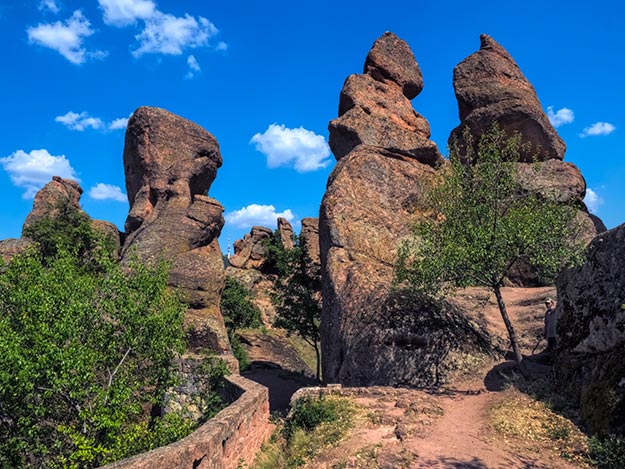
When our stomachs began to grumble, we hurried back to town for another feast, this time at Makashnica Restaurant. Hidden behind a nondescript wall, without Desi’s inside information I never would have known the restaurant existed. We settled at a garden-side table shaded by broad leaf trees and I left the ordering to Desi. Again, platters of local delicacies soon covered the table. Two hours later, I gratefully rolled into bed, ready for the next day’s adventure.
I’d visited Bulgaria’s most stunning natural wonders, attended traditional music and dance performances, and viewed the most treasured artifacts of Thrace. I couldn’t imagine there was more to see, but I was dead wrong. On day three, we motored into the town of Chiprovsti to meet Velika Stoeva, owner of the Chushkarcheto Carpet Store. For four generations, Velika and her ancestors have been weaving traditional Bulgarian carpets on giant wooden looms. The base strings of are cotton, while the yarn is wool. The combination of materials, combined with an extremely close weave, ensures that the carpet will never unravel, despite having no knots. On the day I visited, Velika was working on a special order for a carpet that will be 20 feet long by three feet wide. It will take about four months to complete and sell for about $2,000.
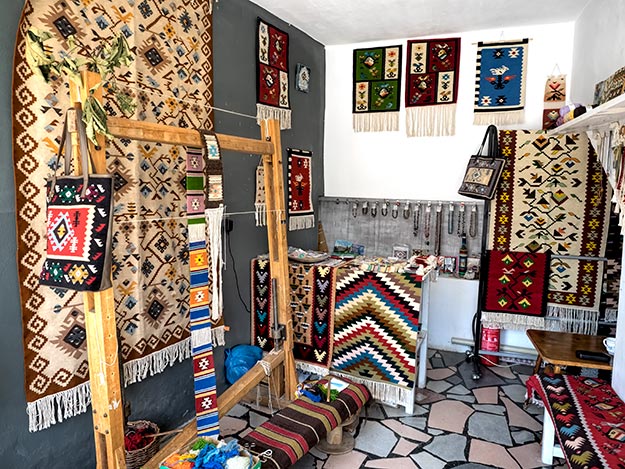
According to the few written documents that remain, the Bulgarian carpet industry began in the 1700’s, during Ottoman rule. Because Islam prohibits the use of human images, these traditional carpets used triangles to represent female and male figures. An upright triangle represented a woman because females have wide hips for bearing children; an inverted triangle was used for men because of their wide shoulders. The hourglass figure – male over the female – is a Makaz, which represents balance, time, and completeness. There is also a diamond motif, which is called Kamula. Its etymology is unknown, but there is speculation it may be from the Ainu indigenous people from Japan and the Kuril Islands in Russia. The Stoevas offer modern designs as well as precise historical designs, however the technique is absolutely authentic, regardless of design.
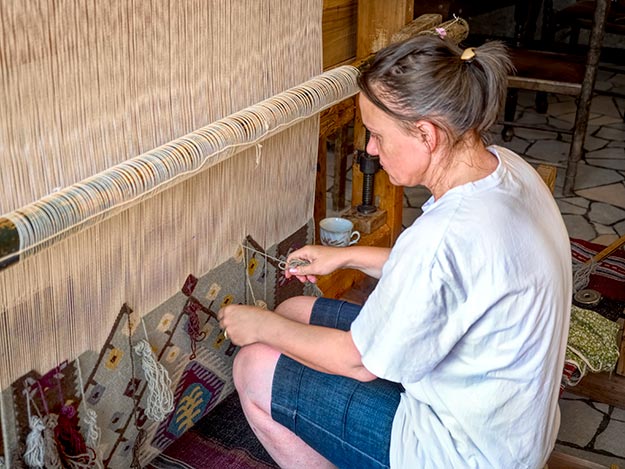
The rest of our day was devoted to – what else – food. At Oogosta Reservoir, the second largest lake in Bulgaria, we enjoyed lunch in a restaurant atop the dam. Full to the brim, we continued to Berkovitsa and checked into Krusteva House. Later that night we joined a few dozen locals in the hotel’s restaurant. While we waited for our food, a traditional Bulgarian folk singer began belting out tunes. Desi leaned over and whispered that normally, the locals would already be dancing. She suspected they were acting prim because they’d heard a foreign journalist was in the room. An hour and many drinks later, all inhibitions disappeared. They formed a circle in the middle of the restaurant and, draping their arms over the shoulders of the people on either side, performed traditional Bulgarian dances.
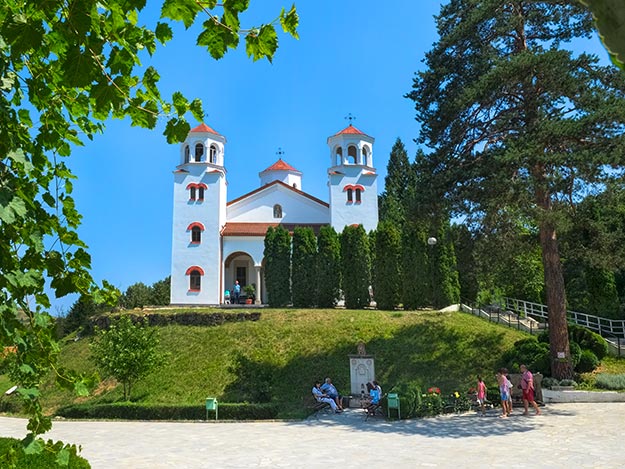
On the way back to Sofia the next morning, we stopped at Klisurski Monastery. According to legend, the Ottomans murdered and burned the bodies of six monks who occupied the original 13th century monastery. The spring that emerged from the hillside on the spot where the slaughter occurred is said to have healing properties. I doused my problematic knees in the water and splashed some into my eyes as suggested by the nun who oversees the monastery. For good measure, I drank a couple of cups as well. For the rest of the day, my hips gave me no trouble but the effect lasted only a day.
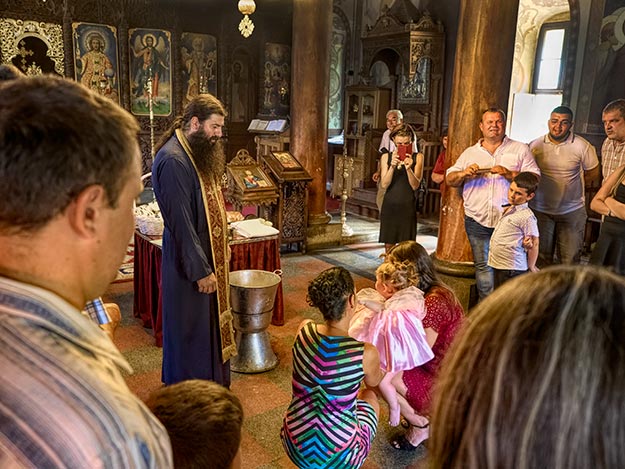
Back inside the main grounds, we climbed to the monastery, where a baptism was in process. A constant stream of baptisms occurs here every weekend and several other families were waiting their turn, including a woman who balanced a giant silver tray of Polgacha bread on her arm. Desi explained that honey and salted bread is served after every baptism as a reminder that life is both salty and sweet. The sight of bread reminded me it was almost time for lunch, so we made one last stop at the nearby Pri Stalin Restaurant, famous for their farm-raised trout.

Desi had originally planned only to show me northwest Bulgaria, but a day after we returned to Sofia she insisted on another trip. “You absolutely cannot leave until you visit Plovdiv. It is Bulgaria’s cultural capital and has been selected as the European Capital of Culture in 2019.” And so we were off to Plovdiv, Bulgaria’s second largest city. Determined to walk off some of the calories we’d packed on over the past few days, we explored the historic center on foot, beginning with the ancient Roman Amphitheater of Plovdiv. Built in the first century AD, the massive marble horseshoe is actively used for town gatherings, concerts, and plays.
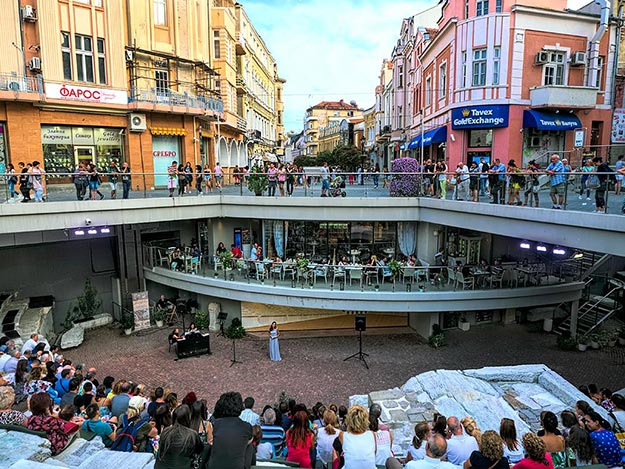
Beyond the theater, we visited historic houses, ancient fortresses, and enjoyed an opera performance at the ancient Stadium of Philippopolis, the name by which Plovdiv was known during the 4th century occupation by Macedonia. Located beneath the two main crossroads in the Old Town area, the stadium was discovered in 1923. The streets were excavated to reveal a portion of the structure, which is estimated to have accommodated 30,000 spectators during Roman times. Unfortunately, with houses and businesses lining the streets, it is impossible to expose more of the stadium, but the revealed portions have been restored and are regularly used for cultural events.
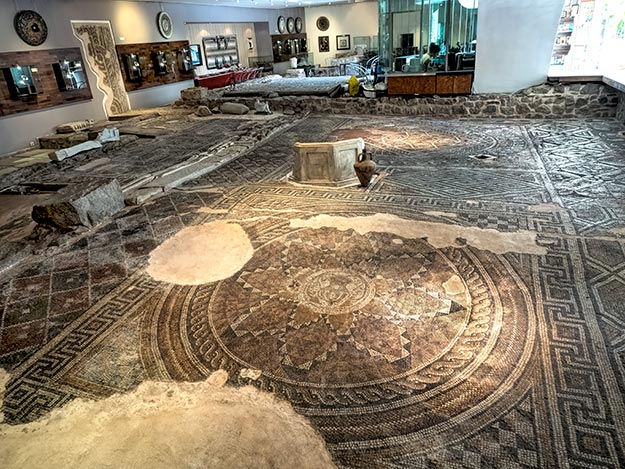
The discovery of such ruins is not uncommon in Plovdiv, which is one of the oldest cities in Europe. A few years ago, one of the most spectacular displays of ancient mosaic flooring was discovered during the expansion of an underground Metro bypass. Rather than relocate the floor, it was left in place and the Trakart Cultural Center and Museum was built around it. Expansion of a road next to Saint Ludwig Cathedral uncovered even more impressive ruins that are believed to be the ancient mosaic floor of the 5th century Great Basilica of ancient Philipopolis. As one local told me, Plovdiv is so old that you can’t dig anywhere without finding something ancient.
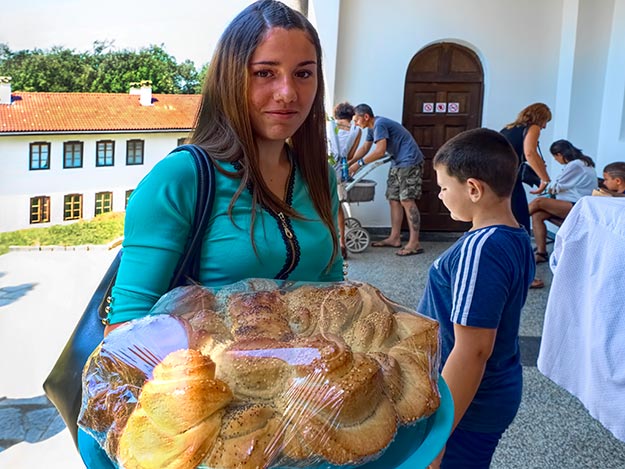
I knew that Bulgaria was one of my favorite European destinations from the first time I set foot in the country, but after a week with Desi the attraction was even deeper. I also knew that I’d barely scratched the surface of what Bulgaria had to offer. But with a friend like Desi, who is passionate about her homeland, I’m sure to return time and again to discover even more.
Author’s note: My friend Desislava Nackova recently decided to start a tour company focused on introducing visitors to the authentic, undiscovered Bulgaria. Though she is just now developing her website and itineraries, Desi will be happy to discuss what to see in Bulgaria. Email her at [email protected]

Great article but the caption on the last photo has it wrong – it is called Pogacha bread, not Polgacha. Peace 🙂
Thanks so much for letting me know Kostadin. I made the correction.
Thank- you for this article. I too was on the Viking ship with Desi! Ithought she was very good at her job. I will keep her in mind when I visit Bulgaria- it sounds marvellous!
Hi Irene: I had forgotten that you were there too! Desi is just a doll and I can’t recommend her highly enough. Sending you wishes for a wonderful holiday season. xoxo
Great Article, would traveling in this country be OK if you do not speak Bulgarian? Would I need a guide? Thanks, just found your blog by way of Journeywoman.
Hi Judy. I have traveled there solo, and I don’t speak a word of Bulgarian. However, wen I was on my own, I was in plaecs that get more tourism, such as Sofia, Sozopol, and Rila Monastery. In the more out of the way places, it might be good to have a translator, like I did. My friend Desi is available and I’m sure you’d love her. Her email is included at the bottom of my story.
We have been there recently. You made me feel Deja vu…
Plovdiv is very special!
Thank you so much Lea – that’s a great compliment for a writer
Thanks for this excellent detailed report. I am thinking of adding Bulgaria to my itinerary for my next trip to Europe. I’ll save your posts and refer to them again.
Libbie
I really encourage you to go, Libbie. Bulgaria is a beautiful country that is still not well-known in tourist circles, and the people and food are fantastic.
Wow! What a historic city. The historic stadium of the heydays of Romans, with a seating capacity of 30000 those days, is amazing. The rock formation and the fort makes anybody spellbound. Thanks a lot for such a wonderful article.
You’re welcome Raigad. Glad you enjoyed it.